Methylene blue is a substance with many different pharmacological and microbiological functions. It’s most well-known for being the dye that stains cells with a blue color. As a medication, it treats methemoglobinemia, a condition where the methemoglobin levels in the blood are too high.
Methemoglobin is a type of hemoglobin, but it’s not the type of hemoglobin that helps carry oxygen in the blood. You should only have small amounts of it in your blood. But, sometimes, certain chemicals and medications can increase that amount. That’s when you get methemoglobinemia. Symptoms of methemoglobinemia include dizziness, headaches, difficulty coordinating muscles, nausea, shortness of breath, and a bluish hue to the skin.
Methylene blue injections help convert methemoglobin into an oxygen-carrying type of hemoglobin. That then helps your blood give your cells the oxygen they need to create energy.
Methylene blue is also used for urinary tract infections and cyanide poisoning, though that is less common nowadays. It is also being used for chronic Lyme disease.
In this article, however, we’ll focus on another use for methylene blue: its role as a photosensitizer in combination with light therapy. This kind of light therapy has been tested on different conditions, specifically cancer and certain types of parasitic diseases.
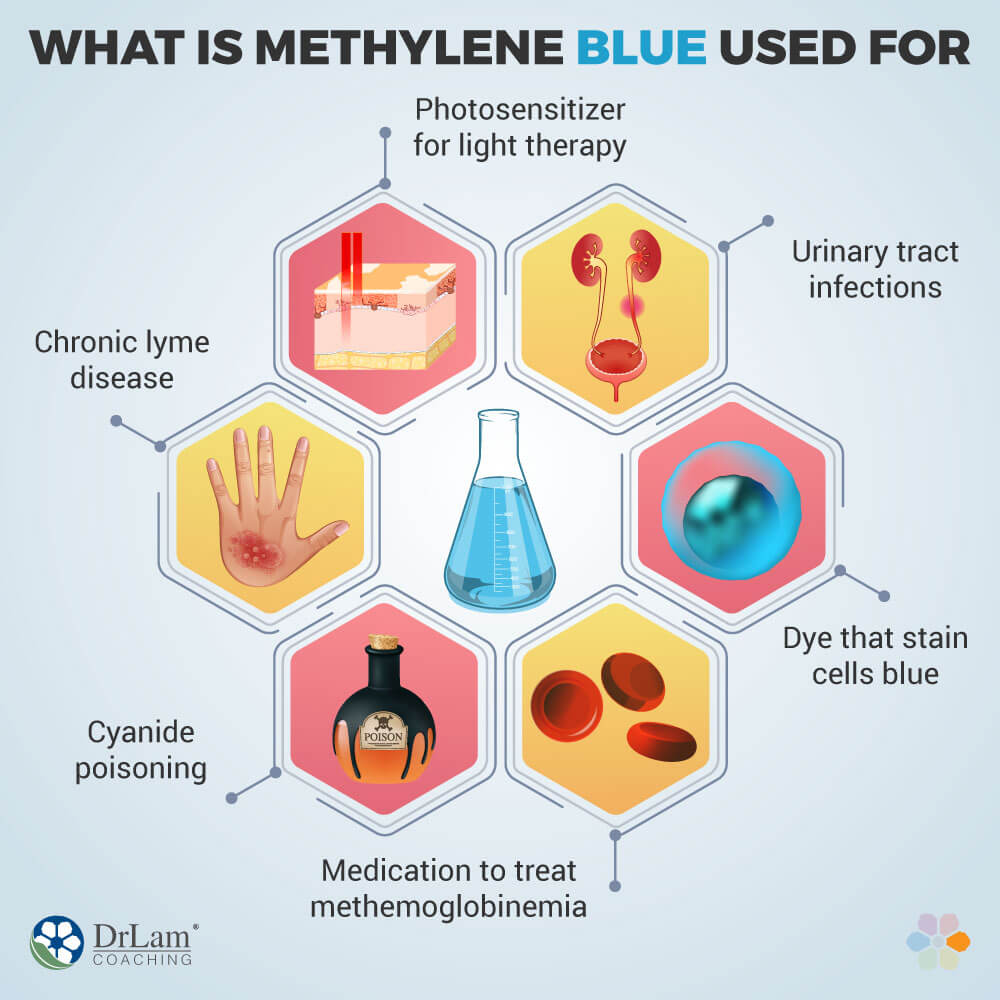
The effects of light on the different biological systems have been studied for centuries. In the human body, we’ve known about the skin’s ability to synthesize vitamin D and the eyes' ability to use light to see for quite some time now. Science has also studied how light affects other living beings, including plants. Plants convert light from the sun into chemical energy that they use to live, photosynthesis.
From there, scientists deduced that we can use light deliberately to induce therapeutic biochemical processes. That conclusion is what resulted in the discovery of light therapy.
Light therapy, sometimes called phototherapy, comes in many different forms.
Light therapy can use lasers, fluorescent lamps, light-emitting diodes, polychromatic polarized light, full-spectrum light, and dichroic lamps.
So far, these different forms of light therapy seem to be effective in improving immunity, triggering the repair process in damaged cells and tissues, enhancing circulation, reducing inflammation, restoring certain impaired functions, and inducing cell death.
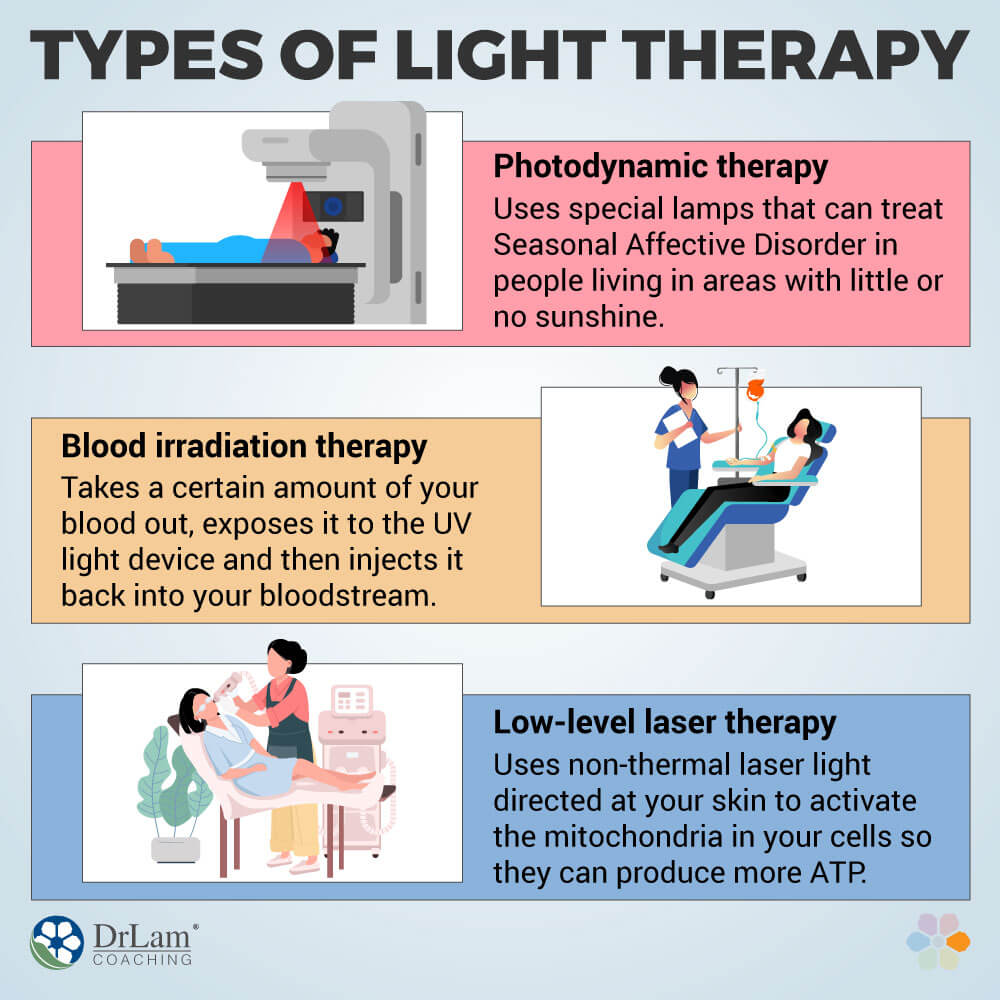
In some of the above therapies, a photosensitizer has to be used in order for them to work. Photosensitizers are substances that make your cells or tissues more sensitive to light. They could range from different types of food to essential oils, topical lotions, oral medications, or injectables.
In many light therapies, you should actually avoid photosensitizers so that you don’t get side-effects. But in some cases, you need a medical photosensitizer to support the light’s effects on your cells and tissues.
Methylene blue is now being considered as a possible photosensitizer for certain types of light therapy. It is a photosensitizer with a peak performance of absorption at 660 nm red light.
Photodynamic therapy (PDT) is a type of laser therapy that uses a diode laser with a 660 nm wavelength in combination with a photosensitizer. Together, they end up creating a type of oxygen that can kill cancerous cells. It seems to be effective for head and neck tumors in their early stages.
Head and neck cancers usually affect the squamous cells in the head and neck. They are the thin, flat cells that line the mucosal surfaces in the nose, throat, and mouth. These types of cancers are also known as squamous cell carcinomas of the head and neck. More rarely, head and neck cancer can affect the salivary glands.
In the US, head and neck cancers make up around 4% of all cancers. In varying degrees, risk factors for head and neck cancers include: being male, being over 50, poor oral hygiene, EBV infection, Chinese ancestry, the use of Paan, and eating certain salted and preserved foods during childhood. Exposure to asbestos, wood dust, formaldehyde, nickel dust, certain synthetic fibers, and radiation can also increase your risk.
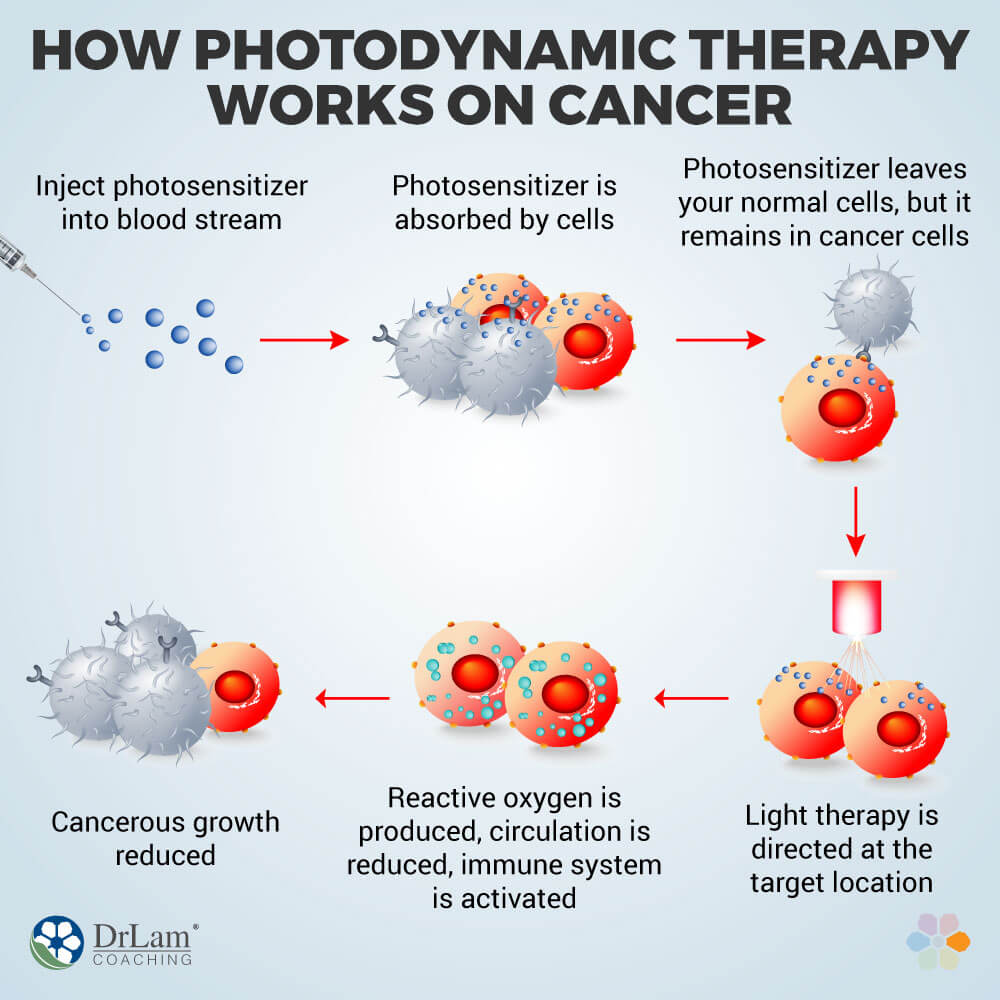
First, the physician or technician will inject a photosensitizer into your bloodstream, before applying the laser. All the different cells in your body then absorb it, including any cancer cells. It makes these cells photosensitive, meaning more sensitive to light. Then, you wait for one to three days. During that time, the photosensitizer leaves your normal cells, but it remains in cancer cells.
This means that the cancer cells are more sensitive to light while your normal cells are not. That’s when the physician or technician will use the laser locally by directing it to the area with the cancer cells.
Until now, the FDA has approved one photosensitizer, porfimer sodium, in PDT for head and neck cancer in humans. But methylene blue is being studied in vitro on squamous cell carcinoma cell lines to check its viability as another option. So far, it is showing promising results in these studies, but it still needs more testing to ensure its safety and efficacy for use on humans.
There are three different ways that PDT can aid with cancer treatment.
Some of the benefits of PDT include:
Side effects include making your skin and eyes sensitive to light for about six weeks after the therapy. That means you should avoid sunlight as much as possible during that time. Less common side effects that affect the tissues near the cancer cells being targeted include:
And, depending on the area of your body the laser targets, you might experience temporary issues there, such as stomach aches, difficulty breathing, and difficulty swallowing.
Because the light from PDT can only penetrate the skin or tissue less than half an inch deep, it can’t address cancers that are too far below the surface or tumors that are too big.
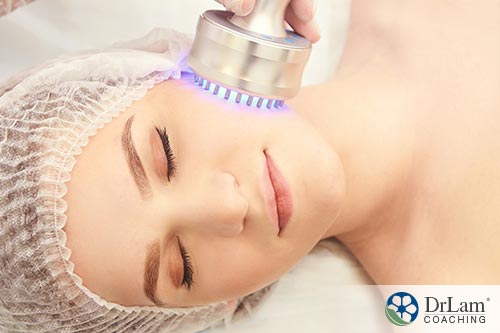 Leishmaniasis is a disease that you can get if a type of female sandfly bites you. Its bite transmits an intracellular protozoan parasite from the genus Leishmania. The resulting condition can be cutaneous leishmaniasis, with skin sores as its main symptom. It could also be mucosal leishmaniasis, with its main symptom being sores in the musical membranes (like the nose, mouth, throat). And, the most dangerous type is visceral leishmaniasis, which can be fatal.
Leishmaniasis is a disease that you can get if a type of female sandfly bites you. Its bite transmits an intracellular protozoan parasite from the genus Leishmania. The resulting condition can be cutaneous leishmaniasis, with skin sores as its main symptom. It could also be mucosal leishmaniasis, with its main symptom being sores in the musical membranes (like the nose, mouth, throat). And, the most dangerous type is visceral leishmaniasis, which can be fatal.
The World Health Organization (WHO) considers leishmaniasis to be a public health concern in certain areas of the world, especially in rural locations. Although the sores or ulcers from cutaneous leishmania can go away on their own after some time, the risk is that it progresses onto mucosal leishmania. And one of the biggest issues with cutaneous leishmania is that, so far, the only method of care for it is quite toxic.
That’s why other therapy options should be tested. One option being tested currently is PDT with methylene blue as a photosensitizer.
One study looked at the internalization of methylene blue along with how PDT affected Leishmania major and Leishmania braziliensis in culture. After only an hour of incubation, the promastigote of Leishmania major and braziliensis did indeed internalize the methylene blue. This means that methylene blue does have the potential to be a good photosensitizer in clinical applications of PDT on leishmaniasis.
Two main dietary photosensitizers may offer similar but more gentle effects. These are:
Riboflavin is also known as vitamin B2 and is found in foods like eggs, liver, green vegetables, and milk. Research on this vitamin is still incomplete, but it has been tested for antimicrobial and blood product sterilization applications. It may also help to stiffen the corneas in conditions like keratoconus where the cornea thins and bulges into the wrong shape. Testing is ongoing to determine whether this vitamin can be used as a photosensitizer. Riboflavin reaches an excited state when activated by 355 to 436 nm blue laser wavelength and can react with lipids and proteins to produce reactive oxygen species like superoxide anion.
Curcumin is the yellow compound in turmeric powder and has several benefits for your health. This spice has been known as a medicinal compound for centuries and yet it’s a relative newcomer in the PDT field. Curcumin is a hydrophobic molecule, which means that it repels or doesn’t mix with water. So, it requires some kind of formulation vehicle when it’s used as a photosensitizer. It’s used most often in dentistry as an antimicrobial photosensitizer because it can destroy oral pathogens. It gets activated and has the highest absorbent rate at 425nm blue light.
If you’re undergoing PDT therapy, then you will need to be careful about supplementing with riboflavin or curcumin as they may interact with the therapy. This may also apply if you’re eating a diet that’s high in these substances. So, if you’re undergoing PDT, make sure you inform your doctor about your diet and use of supplements.
Although light therapy seems to be quite effective in some conditions, as well as safe and inexpensive, you should still be cautious if you have adrenal fatigue or dysregulation in your NeuroEndoMetabolic (NEM) Stress Response.
Adrenal Fatigue Syndrome (AFS) is a condition that you can get if you have chronic stress. Chronic stress can come from physiological or psychological stressors. Things like eating an unhealthy diet, exposure to toxins, taking certain medications, having a chronic illness, or getting recurrent infections are possible physiological stressors. Psychological stress can be anything from financial worries, to relationship problems, to work pressures, to battling a mental health issue.
What happens when you’re facing chronic stress is that your adrenal glands work overtime to produce cortisol. Cortisol is your body’s main anti-stress hormone. The increase in cortisol levels in your system and their eventual drop causes some of the symptoms of AFS.
Symptoms of AFS include fatigue, weight gain, insomnia, anxiety, mild depression, brain fog, PMS, infertility, low libido, lowered immunity, hypoglycemia, heart palpitations, hair loss, dry skin, food and drug sensitivities, and salt and sugar cravings, among others.
And because your adrenals are part of your NEM’s Hormone circuit, when they dysregulate, they can affect all the other NEM components. Six circuits of organs and systems make up your NEM. They are the Hormone, the Bioenergetics, the Cardionomic, the Neuroaffect, the Inflammation, and the Detoxification circuits.
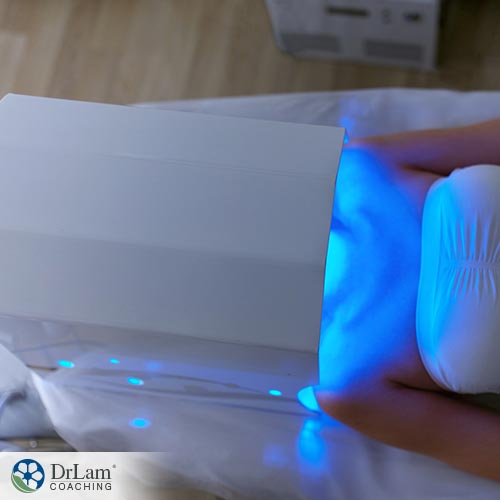 There are some components and circuits of the NEM that could potentially benefit from light therapy. For example, the anti-inflammatory effects of light therapy could help regulate the Inflammation circuit. Some types of laser therapy could relieve the joint pain that comes with inflammation as well. Also, because light therapy could lead to mitochondrial activation, which then helps produce more energy, that can help a little bit with the fatigue.
There are some components and circuits of the NEM that could potentially benefit from light therapy. For example, the anti-inflammatory effects of light therapy could help regulate the Inflammation circuit. Some types of laser therapy could relieve the joint pain that comes with inflammation as well. Also, because light therapy could lead to mitochondrial activation, which then helps produce more energy, that can help a little bit with the fatigue.
But generally, we don't recommend you try light therapy if your NEM dysregulation or AFS are advanced. That’s because your adrenals are already under too much pressure and have become exhausted in these more advanced stages. Any side effects, or even the therapy itself, could add to that pressure.
With methylene blue specifically, we don’t have enough information on how it can affect the adrenal glands. So it's not a good idea to take that risk when you are most vulnerable. Its photosensitizing effects could also be too much for your system if you have advanced adrenal fatigue.
Methylene blue is traditionally used to treat methemoglobinemia, and also as a blue dye to stain cells and other living tissues. But nowadays, it is being investigated as a potential photosensitizer for light or laser therapy. More specifically, the kinds of light therapies that use methylene blue in these studies are meant to manage head and neck cancers and leishmaniasis.
So far, the results are promising but need further studies to ensure that it is a safe and effective modality to use clinically on humans. This is one reason we don’t recommend its use for you, especially if you have adrenal fatigue or NEM dysregulation.
The other reason we don’t advise light therapy for those with more advanced stages of AFS is that its side effects may add more stress on your adrenal glands. In these cases, we recommend you stick to dietary and lifestyle changes, as well as the use of gentle nutrients, all while following the guidance of a health professional experienced in adrenal fatigue.
If you’d like to enquire further about what adrenal fatigue recovery should look like, you can consult with the Dr. Lam Coaching team. We offer a free** no-obligation phone consultation at +1-626-571-1234 where we will privately discuss your symptoms and what your options are. You can also send us a question through our Ask The Doctor system by clicking here.
Methylene blue is traditionally used for methemoglobinemia, as well as for staining cells and living organisms. But lately, it’s being studied for its potential as a safe and effective photosensitizer in light therapy. These types of light therapies target tumors and the cells of specific parasites.
